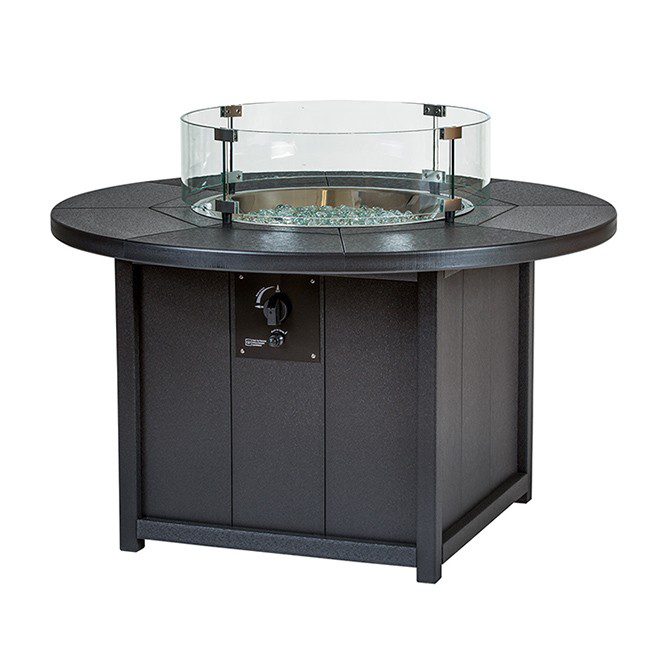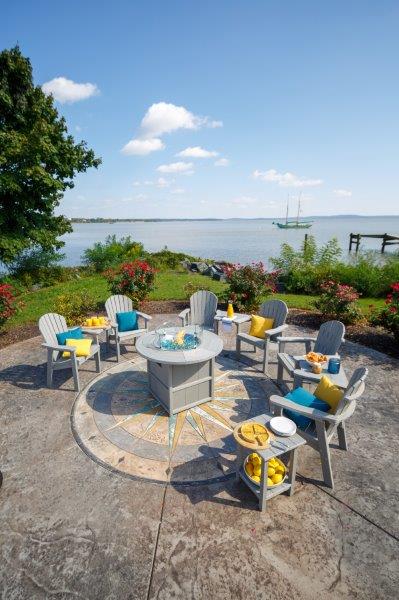No products in the cart.
As temperatures drop across the country, many are still trying to squeeze as much time as they can outdoors during the coronavirus pandemic by purchasing fire pits for their backyards.
There’s been a surge in sales for fire pits and other outdoor items. True Value says it’s also seen a 300% increase in wood-burning fire pit sales.
While many are flocking to stores to purchase a fire pits on their own for this fall season, fire and health departments across the country are advising about health and safety concerns.

We carry Finch fire pits to Turn your backyard into the perfect patio entertainment center. We want to make sure your outdoor kitchen and backyard are well warm, and safe so check out our safety tips below.

It only takes a second for a cozy fire to burst into a blazing inferno. Ensure you get the most enjoyment from your fire pit by keeping family and friends safe.
Fire pit safety starts with selecting the right site. Make sure the ground is level, especially when using a portable fire pit. Keep fires located at least 10 to 20 feet away from surrounding plants, as well as from nearby buildings, including your home. Check with your local city and county authorities to make sure you observe the distance required by law.
Never operate your fire pit beneath a building overhang or in a partially enclosed space. Use special caution related to overhanging trees, which can easily ignite from flying wood-fire sparks. In fire-prone areas, surround your fire pit with non-combustible materials, like crushed stone, brick, or sand.
In wood-stoked fire pits, safety begins with fuel. Only burn wood that’s been seasoned at least six months. Avoid using construction materials, such as plywood or composite woods, which can release toxic fumes when burned. Softwoods, like pine and birch, tend to produce more crackles and sparks than seasoned hardwoods, like oak or hickory. For wood-burning fire pits, cut logs so their length is less than three-quarters the diameter of the pit. Never use lighter fluid or gasoline to start a fire in a fire pit.
If your fire pit has a screen, use it whenever you’re burning. It’s also a good idea to have a bucket of sand or garden hose handy to deal with wayward sparks from wood fires. Attach a hose-end multi-pattern nozzle to the hose, setting it to “spray.†A shower-type spray douses a flare up, while a direct stream of water can spread sparks. Keep fire gloves nearby to handle hot parts of the fire pit safely.
Position chairs so folks can rise and move about seats without risking tumbling into the fire. Built-in seating prevents seats from being drawn too close to the flames; so do heavier chairs. Keep an eye on children whenever a fire pit is being used. Don’t allow them to get too close to the blaze.
Invest in a fire blanket to help extinguish sparks, the fire, and, if necessary, anyone who might catch fire. Also have a fully charged, dry-chemical fire extinguisher on hand with a Class B and C or multipurpose rating. Make sure you understand the effective range, which is typically 6 to 10 feet, and know how to use it properly. On gas fire pits, turn off the gas before attempting to extinguish a fire. Avoid lighting a fire in windy conditions.
When you’re done enjoying your fire for the evening, douse it properly. Most manufactured fire pits offer specific instructions for extinguishing a fire. Review the instructions before it’s time to put out your fire. Water can crack ceramic fire pits and some metal ones.

Before you start up a blaze in your fire pit, check the local weather forecast. Don’t use your fire pit on unusually windy days, as the wind can make it hard to light the kindling and could blow sparks to surrounding brush or structures, potentially starting a fire. Also, always check the direction of the wind before you start your fire. Advise guests to sit on the upwind side of the pit to keep clear of the smoke. If you have a portable fire pit, consider moving it to a location with a natural windbreak—before you light the fire. Â
To fuel your fire, go ahead and use the branches you sawed off that damaged oak tree after last winter’s storms, or buy seasoned hardwood kindling and logs. You can also use softwoods like pine, but know that they burn less efficiently and can give off more sparks and smoke than harder woods, leading to a less pleasant evening by the fire.Â

Fire can be unifying and magical. It attracts people to its warmth and light and infuses outdoor gatherings with joy and romance. But it can also be an unpredictable, destructive force. If you’ve set your fire pit in a safe location and taken the speed and direction of the wind into account, you probably won’t encounter any serious problems. But you should always keep a shovel and water at hand, just in case. In an emergency, you can use the water to quench the fire and the shovel to smother the flames by throwing dirt on them. You may also want to invest in a fire blanket, which can be used to smother a blaze in or outside the fire pit, or (worst-case scenario) on one of your guests. And be sure to teach kids to “stop, drop, and roll” in the event that their clothes catch fire. You may never need any of these safety measures, but without them a fun evening could end in tragedy.

Even after a fire has died down and only glowing embers remain, do not leave it unattended—not even to dash into the house for a beverage or bathroom break. If you must leave, deputize a responsible party to stay with the fire, or extinguish the fire completely before leaving the scene. While tiny flames may seem innocuous, they’re still a potential threat to your safety—after all, almost-extinguished fires have been responsible for some of the most severe wildfires in U.S. history. Pour water over live embers, and turn logs to make sure all sides of the wood have stopped burning before you call it a night.Â






